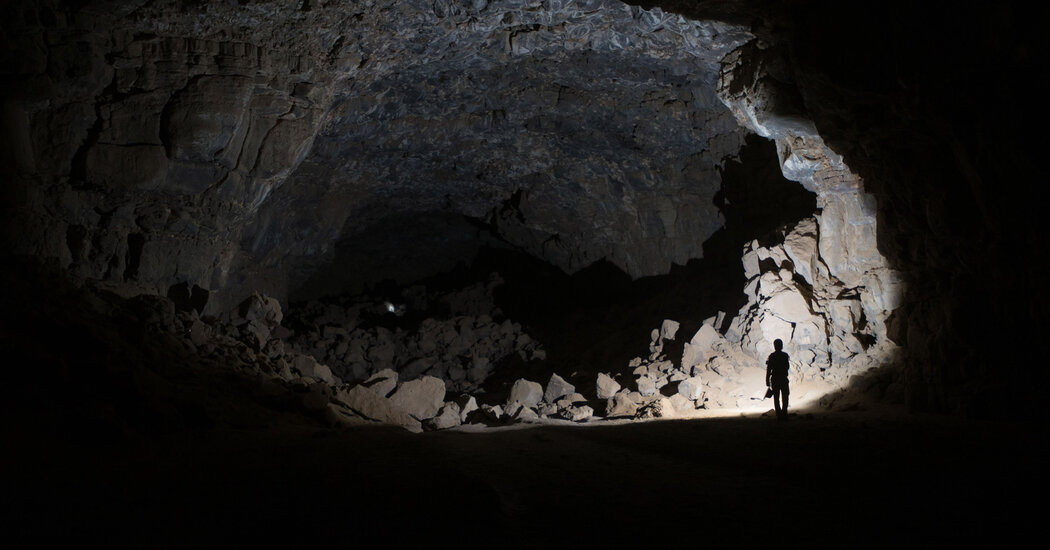Ancient humans left behind numerous archaeological traces in the cavern, and scientists say there may be thousands more like it on the Arabian Peninsula to study.
When ancient humans pushed into the Arabian Peninsula, they found a world marked by magma. Swaths of it once erupted from volcanoes, leaving a landscape of craters and frozen lava flows. Many of these seemingly otherworldly volcanic fields are adorned with archaeological remains — from small dwellings to colossal animal-corralling structures called kites — that date back millenniums.
Little is known about the identities and lives of those humans. But a study published Wednesday in the journal PLOS One has revealed that their occupation of this volcanic realm extended underground. Archaeologists at a site in northwestern Saudi Arabia have excavated a lava tube — the naturally hollowed-out subterranean remnant of a lava flow.
In this lava tube, named Umm Jirsan and the first in Saudi Arabia to be excavated, they uncovered stone tool fragments, animal remains and human bones, the oldest of which were close to 7,000 years old.
“This is really the first clear evidence of people occupying these caves,” said Mathew Stewart, a paleontologist at Griffith University in Australia who is one of the study’s authors.
Umm Jirsan’s tunnels have a combined length of almost 5,000 feet, and only small sections have been examined. Rather than as a permanent habitat, early humans probably used this volcanic cave as a way station during migrations between oases. “Umm Jirsan would have offered a really nice place of refuge,” from shifting and often extreme climatic conditions, Dr. Stewart said.
With thousands of additional volcanic caves like Umm Jirsan across Saudi Arabia, the new study shows that they “hold huge promise” for understanding the migrations of early humans, Dr. Stewart said.
